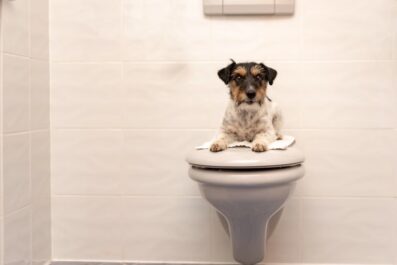What to Expect During Your Dog’s First Training Session?

Bringing a new puppy or dog into your home is an exciting journey, and one of the first crucial steps is to ensure they are well-trained. The first training session is pivotal in setting the tone for your dog’s learning experience. It’s a moment filled with potential, but it can also be a bit daunting for both you and your furry friend. Understanding what to expect can make this experience more enjoyable and productive for both parties involved.
Preparation and Setting the Stage
Before the training session begins, preparation is key. Make sure you select a calm, distraction-free environment where your dog can focus on the trainer’s instructions. It’s advisable to bring along your dog’s favorite toys and treats to keep them motivated and engaged. The trainer will likely start by assessing your dog’s basic behavior and temperament.
This initial evaluation helps tailor the training approach to your dog’s needs and personality. Be prepared for a bit of assessment and adjustment time, as the trainer will gauge your dog’s reactions and adapt their methods accordingly. During this phase, your role is to stay calm and positive, providing encouragement to your dog and creating an atmosphere of trust.
Training Techniques and Communication
The core of the first training session involves introducing basic commands and techniques. The trainer will use positive reinforcement methods, such as treats and praise, to encourage your dog’s good behavior. You can expect to learn how to give clear, consistent commands and how to reward your dog appropriately.
The trainer may demonstrate various techniques, like sit, stay, and come, and then have you practice them with your dog. It’s important to follow the trainer’s lead and be patient, as dogs might need time to grasp new commands.
The trainer will likely emphasize the importance of consistency and repetition, so be ready to engage in several short practice sessions to reinforce what your dog has learned. Effective communication and positive reinforcement are crucial during this time, helping to build a solid foundation for your dog’s future training.
Post-Session Reflection and Next Steps
After the session, you’ll have an opportunity to discuss your dog’s progress and any challenges faced. The trainer will provide feedback on how the session went and suggest areas for improvement. It’s a good time to ask questions and clarify any doubts you might have about the training techniques used.
Additionally, the trainer will likely outline a plan for continued training, including exercises and homework to practice with your dog at home. Consistency between sessions is vital for reinforcing what your dog has learned.
You should expect to establish a routine that includes regular practice and continued positive reinforcement. This ongoing effort will ensure that your dog builds on the skills learned during the first session and progresses in their training journey.
Choosing the Right Training Location
When considering your dog’s first training session, it’s important to evaluate the options available for training locations. Whether you choose Frisco pet training or training in any other place, the quality of the facility and the expertise of the trainers can significantly impact your dog’s learning experience.
Research the training center or trainer’s credentials, reviews, and training philosophy to ensure they align with your goals. A good facility will offer a structured environment and experienced trainers who can cater to your dog’s specific needs. By selecting a reputable training location, you set the stage for a productive and enjoyable learning process that benefits both you and your furry companion.
Understanding Training Styles and Methods
Different trainers may use various styles and methods to teach your dog, so it’s essential to understand their approach. Some trainers may focus on positive reinforcement, while others might incorporate clicker training or even more traditional methods.
During your dog’s first training session, you’ll likely observe the trainer’s style and get a sense of how it aligns with your expectations. It’s beneficial to discuss these methods with the trainer beforehand to ensure they resonate with your training goals and your dog’s temperament. Understanding the philosophy behind the chosen techniques helps maintain consistency and apply the correct methods at home.
Building a Strong Trainer-Owner-Dog Relationship
The relationship between you, your dog, and the trainer is crucial for successful training outcomes. Building trust and respect among all parties involved sets the groundwork for effective learning. The trainer will work on establishing a positive connection with your dog, while you need to maintain a supportive role, reinforcing the trainer’s instructions and being a consistent presence in your dog’s learning process.
Open communication with the trainer about your dog’s behavior and progress will help tailor the training to fit your dog’s needs. Strengthening this triad of trust will enhance the training experience and contribute to your dog’s overall success.
Conclusion
The first training session is a vital step in your dog’s journey towards becoming a well-behaved companion. By preparing adequately, understanding different training methods, and building a strong relationship with the trainer, you set the stage for a successful training experience.
Whether you opt for Frisco pet training or seek out training elsewhere, the effort you invest in this initial session will pay off as you and your dog work together towards achieving your training goals. Consistency, patience, and a positive attitude will help ensure that your dog thrives and that the training process is both enjoyable and effective.




